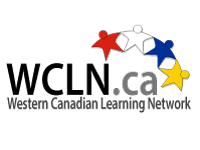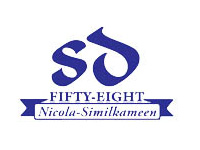Course Synopsis
Athletic Leadership11 is designed to explore recreational opportunities primarily off campus and outdoors which may include, but is not limited to, hiking, disc golfing, golfing, biking, skating, curling, skiing, snowboarding, snowshoeing, pickle-ball, tennis, bowling, swimming, archery, fishing, canoeing, and kayaking. Students will log a minimum of 60 hours participating in a variety of activity types. Course theory will be comprised of direct instruction, experiential learning, and participation in training and certification in leadership positions within the athletic community such as refereeing, umpiring, standard first aid, CPR, coaching etc. Athletic role models will be featured, with an emphasis on indigenous athletes and their contributions to the sport and athletic community. Learners will practice skills by assisting with advertising, organizing, structuring, and implementing athletic events in the school and/or community and will serve for a minimum of 30 hours in a leadership role (sports official, team captain, coach, first aid attendant, athletic event personnel, youth activities coordinator, powwow participant etc.).
Goals and Rationale
This course seeks to familiarize learners with a broad range of recreational pursuits within and around their home community with the hope of encouraging and enabling a
long-term commitment to pursue a physically active lifestyle. Athlete sport-specific performance will also be enhanced by the cross-training in the variety of activity types. Learners will enhance their knowledge and practical skill sets by participating in certification and come away with credentials to add to athletic resumes. Athletic role models will be featured to inspire learners and pass on story and knowledge. Development of leadership capacity will be fostered by assisting with athletic initiatives within the school and/or the local region and by instructing and mentoring younger individuals. Working with younger athletes, peers, coaches, instructors, and role models, will provide students the opportunity to develop their interpersonal skills and not only further their own athletic skills and knowledge but those of younger athletes and strengthen the athletic community. The course would work well running alongside a junior Physical Education or Sport Academy course to connect students across grade levels and grow the school community. Offering the class as a linear option would enhance the variety of activity types and facilities able to be incorporated. The program also lends itself well to connecting learners throughout regions in an online platform to discover shared interests and opportunities available throughout the province.
Indigenous World views and Perspectives
Athletic Leaders hip has many of its initiatives based in the outdoors which enables teaching through experiential learning and reflection on the history of our Indigenous world views and perspectives through stories and traditional teachings. The many hours spent away from a school within nature pursuing physical and challenging activities facilitates exploration of one’s own identity by discovering personal limitations and fears as well as how one is tied to the land and its history. An emphasis will be placed on teaching students to respect the land and preserve it for generations to come. Students will be taught that learning is holistic, and a focus will be placed on connecting with fellow classmates, family, community, culture, and the natural world. Many opportunities and experiences will be provided to support the well- being of the self, the family, the community, the land, the spirits, and the ancestors. Indigenous athletes and athletic leaders will be featured throughout to recognize the significant contributions and achievements of First Peoples within the athletic community.
Students are expected to do the following:
- Take part in Standard First Aid (or refresher course) and CPR C training.
- Understand and demonstrate treatment of first aid.
- Participate in other athletic leadership training opportunities that align with student interest and availability (coaching clinics, sport official training etc.)
- Participate in, and assist with, and organize community-based and school- based activities.
- Serve in an assistive capacity at many school and community events for a minimum of 30 hrs.
- Actively participate in the leadership roles sought or assigned.
- Identify and demonstrate qualities to be a strong leader and contribute to a group and community setting.
- Demonstrate appropriate social behavior while performing various service and leadership roles in the school and community.
- Encourage, assist, and show respect to all classmates, students, and adults,
during the course activities. - Participate in and assist with implementation of outdoor activities and understand the connection between self and land.
- Demonstrate appropriate planning and preparation behaviors conducive to safe enjoyment of the land, nature, and outdoors.
- Demonstrate the appropriate techniques and procedures for correct and safe enjoyment of outdoor and indoor activities.
- Demonstrate mature, safe positive behaviors that embody self-respect and self-confidence while working cooperatively with others.
- Apply communication strategies for working with teams, athletes, and youth.
- Reflect on personal leadership skills that are developed throughout the course.
- Begin development of a personal leadership/coaching philosophy
Students are expected to know the following:
- Human anatomy as it pertains to injuries and first aid.
- Identification and treatment of first aid.
- How to work on their own and with others to reach an identified goal.
- How to contribute in various settings as an individual and as a member of a group.
- How to behave appropriately in various settings at school and in the community.
- How to plan and prepare for various indoor and outdoor activities.
- The safety techniques used for various indoor and outdoor activities.
- How to show respect for fellow classmates, students, and adults.
- The importance of connecting with oneself, classmates, family, community, culture and the natural world.
- Appropriate behaviors while working with fellow classmates, students, adults and nature within the school and community.
- Communication methods and when to use different forms.
- How a leadership/coaching philosophy can help us be better leaders/coaches.
Big Ideas – Elaborations - Certifications
Students will pursue and receive credit for coursework and certification that pertains to injury prevention and treatment (First Aid, CPR,) refereeing in various sports, coaching, or other athletic knowledge and skills. Knowledge and practical exams will inform assessment and grading for this course component.
Outdoor Activities
Students will participate in a variety of indoor and outdoor activities in the community, with opportunities to get students interested and engaged with the natural outdoor world immediately surrounding us. Many local recreation facilities will be utilized as well as their resources and instruction. Prior to each activity, required knowledge will be imparted so that students will maximize their time participating in the event.
Community
A major component of the course is giving back to the school and community in the form of service hours. Each student will be expected to provide a grade level appropriate amount of service time at various school activities such as scorekeeping, refereeing, intramural tournament organization etc. In addition, community event volunteer opportunities will be identified and provided. Students will also be welcome to find their own service activities based on their own interests and local availability. Service may be either volunteer or paid work in an athletic leadership role. Total service will add up toa minimum of 30 hours.
Social Responsibility
Students will be required and/or encouraged to take on leadership roles at various activities by helping to demonstrate or lead individuals, and small groups whenever they feel comfortable doing so. Students will be provided opportunities to develop their leadership skills at various events during class or academy activities, at other schools, and in the community. Through the many activities offered students will demonstrate growth in their personal and social responsibilities. Students may face some of their fears and be given the opportunity to overcome those fears in safe controlled environments. Students will demonstrate appropriate social behaviors while working cooperatively.
Lifetime of Athletic Opportunities
Students will learn preparation planning procedures prior to field trips. Proper clothing and attire and use of safety equipment will be discussed and demonstrated. Proper protocol and behavior during events, activities and field trips will be examined and expected. The goal is to introduce students to a wide variety of activities in a safe and controlled environment in hopes that they will be encouraged to take part with their own families and help to nurture a shared bond with family, the environment, land, traditional teachings, and history.
Recommended Instructional Components:
Unit 1: Recreation Opportunities
Unit 1 is ongoing throughout the course.
Learners will research and report on recreational facilities and activity opportunities in their local community and region.
Learners will plan and prepare for participation in activities of interest and demonstrate understanding of the connection between self and land.
Learners will understand, describe, and demonstrate safety considerations when participating in activities.
Learners will experience and appreciate the importance of connecting with oneself, classmates, family, community, culture, and the natural world.
Learners will fill out monthly activity logs complete with hours, description of activity, and reflection.
Unit module will include introductions to a variety of activity types and safety considerations through a combination of picture and video instruction.
Unit 2: Leadership in Athletics
Unit 2 components will be interspersed throughout other course content within the semester.
Learners will examine the life play and contributions of leaders in sport and share their findings. Students will choose from a list of Canadian athletes
e.g Jordan Nolan, Brigette Lacquette, Darren Zack, Carey-Leigh Thomas, Spencer O-Brien, etc. (Brady Keeper, Ethan Bear, Michael Ferland)
Learners will hear from and engage with athletic leaders and role models within the province and local community.
Learners will reflect upon and analyze characteristics and skill sets of a strong leader.
Learners will develop and apply a personal leadership philosophy to their activities within the course and beyond.
Unit 3: Certification Enables Leadership
Unit 3 is completed at the learner’s own pace during the duration of the course.
Learners will complete theory in and acquire certification or a refresher in Standard First Aid and CPR Level C
Learners will demonstrate first aid and CPR skills.
Learners will research, report on, and may also participate in other athletic leadership opportunities in their local region e.g. coaching clinics, sports official training etc.
Unit 4: Community Leadership
Unit 4 is ongoing through the whole course.
Learners will fill out a monthly service log complete with hours, description of school or community activity, and reflection.
Learners will demonstrate mature, safe, positive, behaviors that embody self-respect and self-confidence while working cooperatively with others.
Learners will apply a variety of communication strategies when working with team-mates, adults, and youth.
Unit 5: Event Organization
Unit 5 will be completed throughout the course with a larger culminating event intended to be planned for near the end of course completion.
Learners will assist with and facilitate organization of activities within the school and community.
Learners will work on their own and with others to reach an identified goal.
Learners will reflect upon their challenges and successes and make recommendations for how the experience may be improved if they were to repeat it
Unit 6: Final Project
Learners will reflect upon their experience throughout the semester and complete a portfolio presentation that demonstrates their growth and continued plans for leadership development.
Assessment Recommendations:
- Ensure alignment with the Principles of Quality Assessment.
- Assessments reflect proficiency with the Learning Standards (Content and Curricular Competencies) as they are explored through the various course activities (at school and in the community).
- Formative and summative components:
- Student self-assessment (journals, reflections)
- Peer feedback
- Teacher feedback
- Certification Exams (First Aid, CPR, etc)
- Service Hours completion (evaluated as evidence of proficiency with Learning Standards)
Learning Resources:
TBD
Additional Information:
Grade 11 hours breakdown: 60 hours physical activity, 30 service hours, 30 hours course theory and certification.
If you are interested in enrolling for this course, please reach out to Mrs. Liana Tilt: This email address is being protected from spambots. You need JavaScript enabled to view it.



